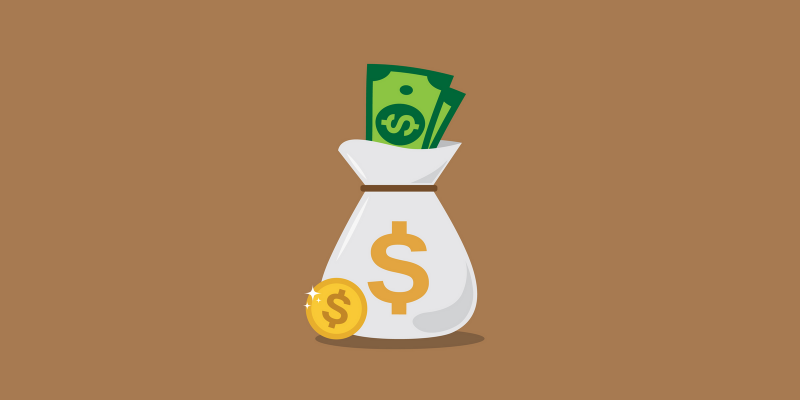This comprehensive guide will discuss the different startup funding stages, such as seed funding, series (A, B, C, D, and so on) funding, and more.
Nowadays, you constantly hear the words startups, valuation, bootstrap, seed funding, venture capital investments, and so much more. Seasoned entrepreneurs know these terms very well, but novice entrepreneurs might feel a little overwhelmed.
In this article, we will discuss the startup funding process at length, the timeline of startup funding, the estimated amount you can raise at each stage, and even the exit options if your startup turns into a unicorn.
So, let’s jump into this startup funding guide.
Why Do Startups Need Funding?
A startup is a business that is based on a unique idea and is in the initial stages of development. A startup can be founded and managed by one or more entrepreneurs.
If you do not have an idea, you can even use AI to generate a business idea.

The main aim of a startup is to address a specific demand for a product or a service. Hence, they have a niched target customer base. Startups are mostly high-cost, low-revenue businesses and thus require outside capital to run their business.
Startups tend to be technology-driven and thus need a workforce that can convert the founder’s idea into products and services. It takes a lot of money for a startup to flourish and become a billion-dollar company like Uber, SpaceX, Canva, Epic Games, and more.
To fund these monetary requirements, companies go through various startup funding stages. Each stage is defined according to the company’s needs, profitability, valuation, future plans, and more.
How Does the Startup Funding Process Works?
First, you need to understand the participants involved in the funding process before knowing how it works. There are startup owners/businesses on one side that want to secure funding, and on the other, there are potential investors.
The investors will invest in the company if they see a potential for growth and, of course, make multifold returns on their investments. Before any capital is raised, there’s a process of assessing the valuation of a company.

Valuation is based on management, growth expectation, projections, capital structure, market size, and risk. Some seasoned investors also have their own methods of evaluating a business.
Some of the factors that affect the valuation of a startup are:
- Revenue: An estimation of a company’s current earnings and how much it will make. The formula for calculating revenue is Market Size X Market Share.
- Market Size: The total value of the market that the business operates in. Calculated in US Dollars.
- Market Share: The startup’s position in the market, for example, 1% of the overall market size.
- Multiple: An estimate to derive the value of the business, for example, 10X or 12X the revenue.
- Return: The increase in value compared to the invested capital. It is based on estimated growth in market share, market size, and revenue.
Now that you have understood why startups need funding and how the funding process works, let’s move ahead and discuss what the various startup funding stages are.
Core Startup Funding Stages
At the funding stage, startups pitch their business ideas to investors and try to raise funds to meet their financial needs.
Let’s see the most crucial startup funding stages, how much capital can be raised at each stage, and why businesses raise capital in stages.
- Pre-Seed Funding
- Seed Funding
- Series A, B, C, D, and more
- Initial Public Offering (IPO)
Note: Before entering the funding stage, you must register your company as a Private LLC. This is a mandatory legal requirement.
A sole proprietor or an unregistered private startup cannot raise funds beyond the pre-seed stage.
Pre-Seed Funding

Now that you have got your unique business idea, the first thing you will do is analyze the market for your product/service. This analysis will verify that your business idea is executable.
To convert this unique idea into reality, initially, you will have to invest some funds from your own pockets. This money could come from your personal savings or borrow money from your friends and family.
The pre-seed funding round is also known as bootstrapping. It simply means the startup owners use their own existing resources to scale their startups in the most resourceful manner.
The funds in the pre-seeding stage are mostly used for research and development; this also allows the entrepreneurs to test the viability of their idea. During this stage, many startups also seek guidance from veteran startup founders to determine the costs, design a profitable business model, and collect ideas to run the business smoothly.
It is also advised to sort out any copyrights, patents, partnership agreements, or any other legal requirements at the pre-seeding stage only. Else, it might dissuade potential investors, as no investor wants to invest in a company that has unsolved legal issues.
Potential Investment: USD $10,000 to USD $100,000
Seed Funding

This is the most crucial stage for any startup, as matters get a little serious here. According to Failory, 9 out of 10 startups fail at the seed funding stage.
At this point, you will take your prototype to the potential investors and offer them company equity in exchange for larger amounts of capital. Most of the time, funds collected in this stage are used for the following:
- Product launch
- Marketing campaigns
- Hiring new resources
- Additional market research for product-market-fit
Since you will be hiring some employees at this stage, you will need to invest in a team collaboration tool like Slack, Microsoft Teams, Zoho, or more. If you intend to hire remotely, then you might also need to invest in a document collaboration tool like Notion, ClickUp, or monday.com.
Potential investors at seed funding stages are:
- Angel Investors [entrepreneurs, individual investors, etc.]
- Early-Stage Venture Capital Firms [Sequoia Capital, Tiger Global, Accel, and more]
- Incubators [Y Combinator, Microsoft Accelerator, Techstars, and more]
At this stage, angel investors, another popular term in the startup ecosystem, enter the funding game. Angel investors are those investors, and seasoned entrepreneurs, who invest in a company at their pre-revenue stage and also offer their expertise for the success of the business.
Hence, these early-stage investors are called angels. You can also raise some funds from friends and family or via a crowdfunding campaign.
You should go for a seed funding round when your startup is valued between $3 million to $6 million. Potential investment depends upon the parties and their investment capacity.
Potential Investment: $50,000 to $3 million
Series Funding Stage (A, B, C, D, and more)

At this stage, the company is getting good customer traction and sales and now wants to expand its market share. To achieve this, the company will have to scale up its business and focus on a proper marketing strategy.
The company also intends to invest in the latest technologies. At this startup funding stage, the Series A round begins. If you have seen the popular show Shark Tank, you’d be familiar with the Series A funding round.
At this stage, investors want to invest in companies that have already launched their products and already started generating revenues. As a company grows, so does its revenue and valuation, and thus the funding requirement goes up as well.
Companies need to raise funds from established venture capital firms to fulfill this increased capital requirement. Some big institutional investors that you can expect to see at this stage are Sequoia, Lightspeed, Saif Partners, Nexus, Matrix, Kalari, and more.
There is no pre-determined amount that you can raise in each of these Series rounds. It depends from company to company.
Let’s discuss the potential funds and their uses in each Series round.
Series A: Potential Investments and Fund Uses
At this stage, investors are not just looking for companies based on great ideas but a company that is backed by a strong strategy and a profitable business model. All of which is necessary to turn the startup into a successful, money-minting business.
This is why companies that are valued at up to $50 million go for Series A funding. Series A funds are mostly used for future business growth, such as:
- Improving your business processes
- Product development
- Creating a scalable blueprint for growth
- Counterbalancing shortfalls and financial losses
You might also want to invest in sales intelligence tools to understand your customers better and increase sales.
Potential Investments: $2 million to $10 million
Series B: Potential Investments and Fund Uses
Series B funding rounds are mostly to take business past the development stage.
With the Seed and Series A funds, businesses focus on market research, product development, and creating a substantial user base. Still, Series B funds are used to expand the market reach and meet increased demands.
Only well-established companies go into Series B funding. According to Fundz, in 2022, companies going into the Series B funding stage had a median valuation of $35 million and an average of $51 million.
Series B investors are mostly the same as Series A – the big institutional investors. Often, there is an anchor investor that reels in other investors. The only difference in Series B you’ll see is the influx of new venture capital firms specializing in expansion-stage investing.
Series B funds are mostly used for:
- Market expansion
- Advanced activities to reach new markets
- Assemble teams for various departments – marketing, human resources, etc.
Potential Investments: $10 million to $25 million
Series C: Potential Investments and Fund Uses
A company heading into the Series C funding stage is already successful. At this stage, companies want to expand their product catalogue, venture into new markets or even acquire other companies.
An investor’s objective is to get a 2X or 3X return on their investments. Series C funds are mainly invested in scaling the company by expanding the market reach or acquiring another company.
Raising funds in Series C is easier compared to previous rounds, as the company is substantially growing, and investors trust the startup to succeed even further.
Series C funds are used for:
- Build new products
- Expand market reach
- Acquire underperforming companies in the same industry
Potential Investments: $25 million to $50 million
Series D: Potential Investments and Fund Uses
Most companies don’t even go into Series D funding rounds, but if they do, it’s mostly for two reasons:
- Lucrative Opportunity: Before jumping into an IPO, the company sees an unmissable takeover opportunity.
- Subpar Performance: The company needs more funds to achieve the goals set in the Series C funding round.
There is no cap on the number of funding rounds a startup can complete. If a company has more ambitious revenue goals, it can complete as many fundraising series as needed.
Potential Investments: $50 million to $100 million
At this stage, you, as the company owners, have two options: EXIT or IPO.
Now that your company has grown into a multi-million dollar company or even a billion-dollar unicorn, big players will offer you a huge lump sum amount to acquire your business.
This can be a 100% takeover deal or even a merger. You, and your investors, can decide to take all the profits and exit the company. Remember how Facebook took over WhatsApp?
The second option you have at the Series funding stage is to go for an IPO, which takes us to the fourth startup funding stage.
Initial Public Offering (IPO)
Launching its Initial Public Offering (IPO) is the ultimate stage for any startup. At this stage, the private startup becomes a public company and raises funds directly from the public.

Initial Public Offering (IPO) simply means the first offer made by the company to sell its equity shares directly to the public through a stock exchange. The stock exchange can be within the country of operation or in another country.
The company can even be listed on multiple stock exchanges. Some of the biggest IPOs in recent memory, such as Stripe, Instacart, Discord, and more, were in the fourth stage of their startup funding stage.
Pre-Requisites for Launching an IPO
While launching an IPO, the process mainly has two parts:
✅ Pre-marketing phase
✅ IPO launch
The company will advertise the IPO offer to underwriters (mostly investment banks) and encourage private bids, or it can publish a press release to generate public interest. The company chooses one or several underwriters who lead and manage the IPO process.
The investment bank evaluates the company through financial analysis and decides on a valuation, share price, IPO launch date, and more. They also take care of every aspect of the IPO – due diligence, documentation, filing, marketing, and even issuance.
Before launching an IPO, the company must be registered with the Securities and Exchange Commission (SEC) and meet all the eligibility criteria. Once everything is done, the company will be listed on a stock exchange.
Once publicly available, the general public can buy and sell the company’s shares. This is how the company will now raise funds. IPO is the final part of the startup funding stages.
Benefits of an IPO
- Ability to raise capital from the general public
- The company’s growth reflects in the share prices, which in turn leads to increased market capitalization
- Public companies have easier acquisition deals (share conversions)
- Increased transparency for the general public
- Favorable credit borrowing terms
Final Words
So, we saw different startup funding stages and how much capital you can expect to raise in each round.
In conclusion, there are four core startup funding stages: pre-seed, seed, series rounds, and initial public offering (IPO). Each stage has unique challenges and opportunities, and startups should carefully consider their options before choosing a funding path.
Startups should choose the funding path that best aligns with their goals and objectives. Seed funding is a good option for startups that are just getting started. Angel funding is a good option for startups with a working product looking to grow.
Venture capital funding is a good option for startups that are looking to scale. Private equity funding is a good option for startups that are looking to acquire or merge with other companies.
Finally, an IPO is a good option for startups that are ready to raise capital from the public markets.
No matter which funding path a startup chooses, it is important to have a strong business plan and a clear understanding of the risks and rewards involved.
Next, check out working capital providers to fund your business growth.

